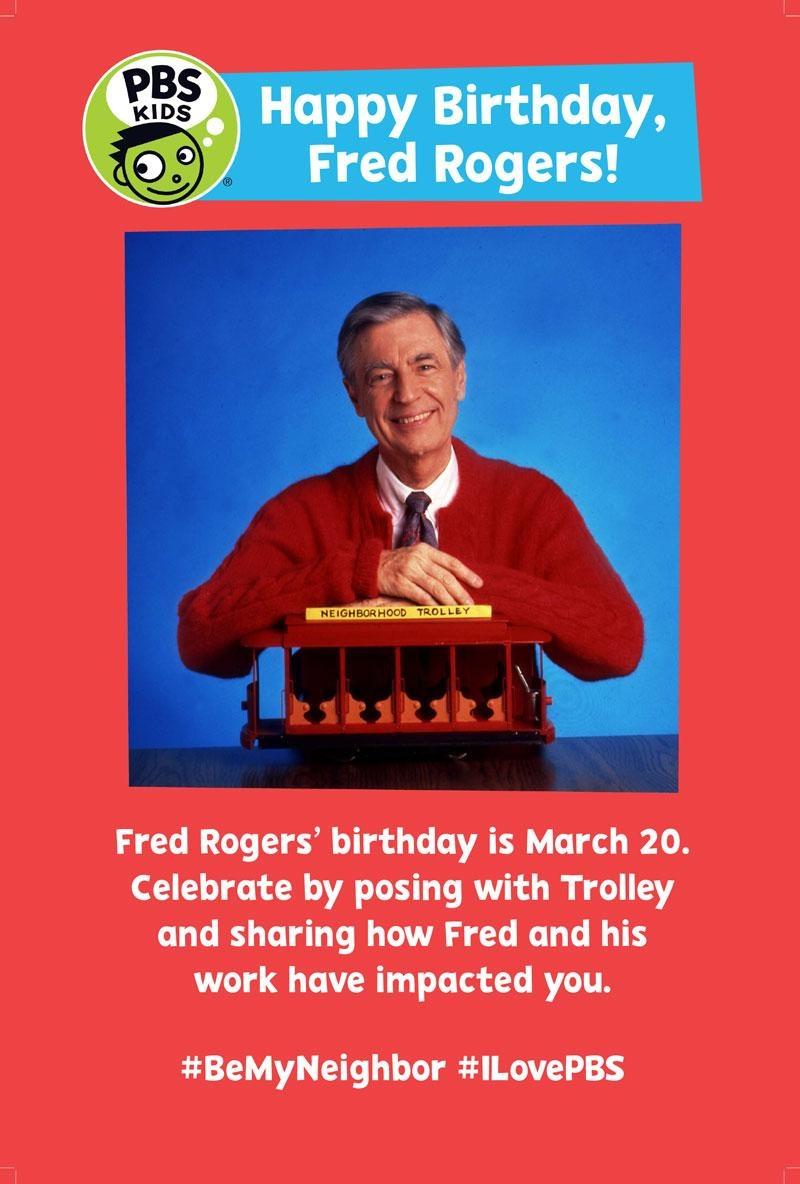Remembering Mister Rogers
Dr. Judy Rubin reflects on her time as the ‘Art Lady’
Posted on March 17, 2017 by Lindsey FoatThough it’s been 51 years since Dr. Judy Rubin had her television debut as the “Art Lady” on “Mister Rogers’ Neighborhood,” Fred Rogers impact on Rubin’s career remains.
Rubin was reluctant to go on television at first, but video is now one of the main ways the renowned art therapist and psychologist demonstrates the power of art therapy.
In addition to teaching at universities and writing books on the topic, Rubin co-founded Expressive Media, a non-profit which distributes educational art therapy films.
On a foggy Sunday this month, Rubin spoke to a group of students and educators at the 43rd Annual Art Therapy Discovery Day at Emporia State University.
We sat down with Rubin to discuss her time as the “Art Lady” on “Mister Rogers’ Neighborhood” in the late sixties, and how we might honor Rogers’ legacy.
Note: Rubin’s comments have been lightly edited for length and clarity.
How did you meet Fred Rogers and become the “Art Lady” on Mister Rogers’ Neighborhood?
“Well [Fred] and I had the same mentor, a woman named Margaret McFarland, who actually introduced me to art therapy. Fred had actually studied to be a minister, and he was also a musician, as well as a puppeteer. But he was very interested in learning more about children, because he had been involved in a early television program for children at WQED when it first started. He had this show in Canada through the CBC, where he was on camera for the first time. He was just behind a tree with the puppets, so you didn’t see him. He had developed the Neighborhood of Make Believe and many of the characters, and he had decided to do a show and Sears Roebuck sponsored it, and he said ‘I’d like you to be on it.’ And I said, ‘Well, gee, I’m sorry, I’m gonna take some time off because I am going to have my third child, and I want to be able to stay home and nurse. Beside, which I am not a performer.’ And he said, ‘Well, that’s why I want you because you’re not a performer, and you won’t have to memorize a script.’ I said ‘No, no that’s not gonna work.’ So six months go by, I get this package with six scripts in the mail. I called him up, and I said ‘Fred, I told you I didn’t want to do this.’ And he said, ‘Try it. You’ll like it. You don’t have to memorize anything. Just read the scripts, figure out you can do with kids, bring in what the kids do, and you and I will do some art together.’ So that’s basically the format. He would send me script, and I would try to figure out something I could do with young children.”
What are some of your favorite memories from your time on Mister Rogers’ Neighborhood?
“We would have fun. He was very playful. He would kick me under the table, because it was a very large studio, and I was too vain to wear my glasses. So I couldn’t see the sign that was being held up saying you have 10 seconds or whatever. So he would kick me when it was time for us to wind up. And I’d say, ‘Oh I’m sorry Mister Rogers, I have to go!’ I guess I was probably on once a month. The other reason I think I did it was because I had a grandmother who was in a nursing home in New Jersey, and it was being broadcast to certain markets, one of them was New Jersey. I missed my grandmother very much, and she missed me. Traveling wasn’t so easy in those days, and we couldn’t afford a lot of trips, so it was a way of visiting her.
In those days you literally had to tape from beginning to end because they couldn’t edit the way they can today. If it didn’t go right you had to go back and do it over again. I had to be there for the whole three hours just in case we had to redo my section. So, I’m sitting in the corner waiting my turn and way at the other corner of the studio, there’s this cow being milked. I was nursing this child, the reason I didn’t want to be on the show. I had my smock over the nursing bra, and I’m sitting there watching the cow. And Hedda Sharapan, who was the young child development student who helped with the program, came by and said, ‘Judy! You have these two huge stains on your smock.’ I had no idea. It’s what’s known as sympathetic lactation, so I had to run home and get another smock before my turn. But that’s one of the funnier memories, but I enjoyed it very much.”
How did Mister Rogers influence you?
“He actually got me to make my first film because I was telling him about some multiply-handicapped blind children I was working with. I said nobody is ever going to believe how creative they are. I can tell them, but nobody in the school thought they could do anything. And frankly I didn’t know what to expect, and they [were] just amazing. He said, ‘Well you’ll have to make a film.’ I said, ‘I don’t know anything about filmmaking.’ And he said, ‘Well you must know somebody with a camera.’ So I knew some people at children’s hospital, who were making slides, which is what you used in those days, and they had just bought a 16mm camera. That became my first film. Then I was quite sold on film as a way of teaching, although I’ve written books too, but I think you almost have to see it in art therapy to understand it.”
Do you remember any of art projects you did on the show?
“The one I actually have the whole session of was about birds. Lady Elaine, who was one of the puppets, was having some sort of a festival having to do with birds – peace doves for peace. Fred was a peacenik. So I had kids make birds out of different materials, including things that were in the refrigerator. I remember a potato bird. I mean [Fred] really was very insistent that it had to be simple materials. So I brought in this assortment of birds that had been made by children between three and seven. And then he and I made birds. He had a canary on the program that day. He started it out with his canary in the cage, but the idea [of the episode] had to do with birds and freedom and peace. He was a minister, and children’s television was his ministry.”
What are the main lessons you think Mister Rogers taught us?
“Because he studied child development, he was pretty sophisticated. He had a way of communicating with his songs, with the characters and with the stories. He taught people about feelings – accepting and managing them – and being respectful of one another.
When I made the film [Lessons From Mister Rogers Neighborhood], I ended up using mostly his songs. I thought I would use some of the stuff from the Neighborhood, but the songs sort of encapsulated it, like ‘What do you do with the mad that you feel? When you feel so mad you could bite?… Do you pound some clay or some dough?’ And ‘Some are fancy on the outside, some are fancy on the inside.’ I mean that’s still true.”
What’s next for you?
“My last big dream is a streaming library where people can look at some of the early and recent films of whole therapy sessions, where they can learn by seeing master clinicians at work. So we’re going to put them online as an e-learning portal, and people will have to pay a little something to have access, and then hopefully we’ll be able to offer continuing education credits. But since art therapy is growing so much and so rapidly around the world, I hope this will provide a kind of resource that most countries don’t have. Usually [people in other countries] start a program with somebody trained in the U.S. or the U.K, but they don’t have many books [on the topic] in their language. The nice thing about film is that you don’t necessarily have to know the language to see what’s going on. That’s my big dream is this streaming library.”
What should we keep in mind, especially on Mister Rogers’ birthday on March 20th, to honor him?
“I think you are special. That was his message. His respect for people of all ages was profound. It was real. It was sincere. He was authentic. He was the same guy off-screen as he was on-screen. That message of respect for the other, especially if the other is different from you, is one that I think we need a lot in this day and age.”


